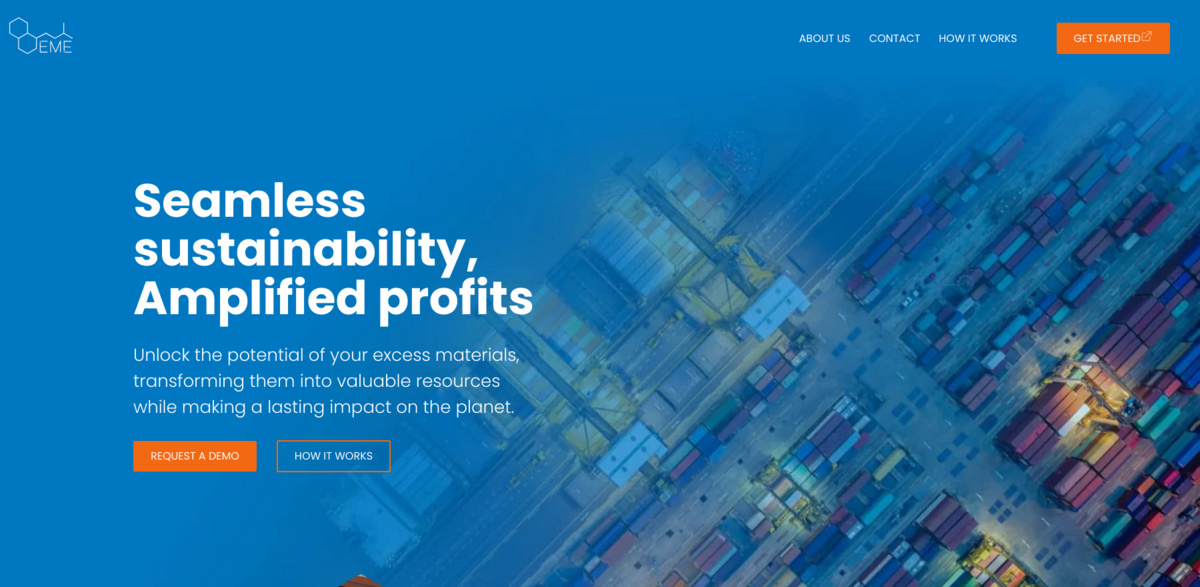What is the Excess Materials Exchange (EME)?
Excess Materials Exchange, or EME for short, is a groundbreaking digital platform designed to speed up the shift towards a circular economy. It’s all about making the reuse of materials and products not just possible, but efficient and impactful. At its core, EME transforms how businesses view and handle materials, turning surplus into opportunity. This platform isn’t just tech for tech’s sake — it’s a toolset and ecosystem that connects companies across industries, helping them unlock hidden value, cut down environmental footprints, and rethink how resources are used. Simply put, EME makes circularity accessible, scalable, and meaningful, empowering businesses to lead the way in sustainability.
Main Benefits of the Excess Materials Exchange
Here’s a quick snapshot of what makes EME stand out:
- Accelerates the transition to a circular economy by facilitating material reuse
- Connects suppliers, buyers, and recyclers through an easy-to-use digital marketplace and auction system
- Integrates advanced tech like AI, machine learning, QR and RFID within Product Passports
- Offers powerful reporting tools for better decision-making
- Supports cross-sector collaboration, enabling materials to find new life beyond their original use
- Includes innovative modules such as Resources Passport, Tracking & Tracing, Valuation, and Matchmaking
Material Matchmaking: Connecting Supply and Demand
One of EME’s standout features is its material matchmaking capability. Imagine a platform where inventory management tools meet a dynamic marketplace and auction system — that’s EME. It connects suppliers who have excess materials with buyers and recyclers looking for exactly those resources. This matchmaking doesn’t just help clear out waste; it unlocks the highest possible value for materials that might otherwise be discarded. It’s like a dating app, but for materials and products, ensuring that nothing valuable goes to waste and that every surplus finds a new purpose.
Advanced Technology Powering EME
At the heart of EME lies a sophisticated technology stack that’s anything but ordinary. It leverages AI and machine learning to optimize matches and predict material flows. Plus, it uses QR codes and RFID technology embedded within Product Passports — giving each material a unique identity and detailed information. This means materials can be tracked and traced throughout their lifecycle, ensuring transparency and trust. On top of that, the platform’s reporting tools provide businesses with insights that help them make smarter, greener decisions. It’s tech that’s smart, secure, and designed to make circularity work in the real world.
Cross-Sector Collaboration: Expanding the Circular Economy
EME isn’t limited to a single industry or niche. Instead, it fosters cross-sector collaboration, connecting businesses from a wide range of fields. This broad network means materials can find new applications far beyond their original context — think construction materials reused in manufacturing, or packaging materials finding new life in agriculture. By breaking down industry silos, EME creates a vibrant ecosystem where reuse solutions multiply and innovation thrives. It’s a platform that turns isolated efforts into a collective movement towards sustainability.
Impact on Sustainable Development Goals (SDGs)
- SDG 12: Responsible Consumption and Production — by promoting material reuse and reducing waste
- SDG 9: Industry, Innovation, and Infrastructure — through advanced technology integration and innovation
- SDG 13: Climate Action — by lowering environmental impact via circular resource use
- SDG 17: Partnerships for the Goals — fostering cross-sector collaboration and networks
- SDG 11: Sustainable Cities and Communities — supporting sustainable material flows in urban environments
Unlocking Value Beyond Waste
EME is more than just a platform — it’s a mindset shift. By giving materials an identity through Resources Passports, tracking their journey with the Tracking & Tracing module, and assigning financial, environmental, and societal value via the Valuation module, EME transforms waste into a resource. This approach not only helps businesses save money and reduce waste but also drives systemic change. It’s about seeing materials not as leftovers, but as opportunities waiting to be tapped. In a world where resources are finite, EME offers a fresh, tech-powered way to rethink and reshape the future of materials.





















